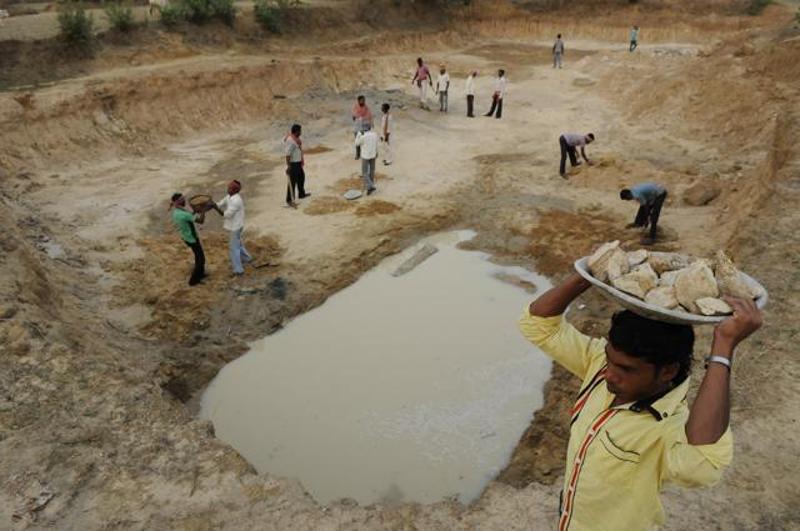
Community-driven water storage projects have emerged as effective solutions to address water scarcity and enhance water security in various regions of India. These initiatives empower local communities to actively participate in managing their water resources, fostering sustainability, resilience, and socio-economic development. Let’s explore some inspiring examples and lessons learned from successful community-driven water storage projects across India.
Rural Rainwater Harvesting Systems
In many rural areas of India, rainwater harvesting has been revitalized through community-driven initiatives. Villagers collaborate to construct and maintain rooftop rainwater harvesting systems, which channel rainwater into storage tanks or underground reservoirs. These systems replenish groundwater levels, providing a reliable water source for drinking, irrigation, and livestock. Successful projects emphasize community involvement in planning, implementation, and maintenance, ensuring sustainability and long-term benefits.
Community-built Check Dams and Ponds
Check dams and ponds are traditional water harvesting structures that communities in semi-arid and drought-prone regions have revitalized. These structures are built across seasonal streams and rivers to capture rainwater runoff and recharge groundwater. Community members contribute labor, local materials, and expertise to construct and maintain these dams and ponds, enhancing water availability for agriculture and mitigating the impact of droughts. Lessons learned include the importance of participatory decision-making, technical guidance, and leveraging traditional knowledge for effective water management.
Watershed Management Committees
Watershed management committees have been instrumental in organizing community efforts to conserve and manage water resources sustainably. These committees, comprising local residents, farmers, and officials, collaborate to implement soil and water conservation measures. Activities include afforestation, contour trenching, and building percolation tanks to enhance groundwater recharge. Successful committees prioritize equitable water distribution, conflict resolution, and capacity building to empower communities in managing shared water resources effectively.
Integrated Farm Ponds
Integrated farm ponds have transformed agricultural practices in water-stressed regions by providing localized water storage for irrigation and livestock. Farmers pool resources and labor to excavate and line ponds, which capture rainwater and runoff for agricultural use. These ponds improve crop productivity, diversify income opportunities through fish farming, and reduce dependency on erratic rainfall patterns. Lessons emphasize the need for technical training, financial support, and community cooperation to ensure the sustainable management and maintenance of farm ponds.

Urban Community Water Reservoirs
In urban areas facing water scarcity, communities have initiated projects to construct and manage communal water reservoirs. These reservoirs collect treated wastewater, rainwater, or piped water for non-potable uses such as gardening, cleaning, and sanitation. Residents collaborate with local authorities and NGOs to design reservoirs that meet water quality standards and integrate with existing water supply infrastructure. Successful projects highlight community engagement in water conservation awareness, monitoring water quality, and advocating for policy support for decentralized water reuse systems.
Lessons Learned and Benefits
Community-driven water storage projects in India demonstrate several key lessons and benefits:
Community Empowerment: Engaging local communities enhances ownership, participation, and sustainability of water management initiatives.
Environmental Sustainability: Projects promote ecosystem restoration, groundwater recharge, and resilience to climate variability.
Social Cohesion: Collaborative efforts strengthen social bonds, promote gender equality, and improve livelihoods through enhanced water access.
Economic Opportunities: Water storage projects stimulate local economies through employment generation, improved agricultural productivity, and reduced dependency on external water sources.
Conclusion
Community-driven water storage projects in India exemplify the power of collective action in addressing water challenges and promoting sustainable development. By sharing knowledge, resources, and responsibilities, communities can effectively manage water resources, enhance resilience to climate change, and improve livelihoods. Government support, technical assistance, and partnerships with civil society organizations play crucial roles in scaling up successful community-driven initiatives nationwide.
As India continues its journey towards water security and sustainability, community-driven water storage projects serve as inspiring models for empowering local communities, conserving water resources, and fostering inclusive growth. By learning from these examples and applying lessons learned, communities across India can achieve greater resilience and prosperity through effective water management practices.


